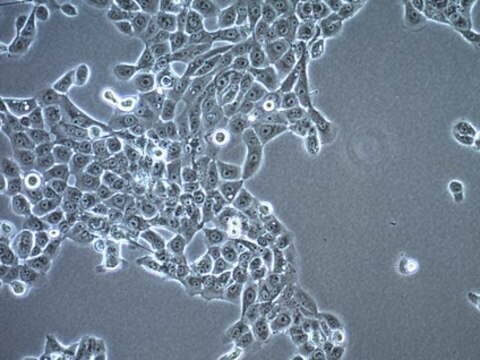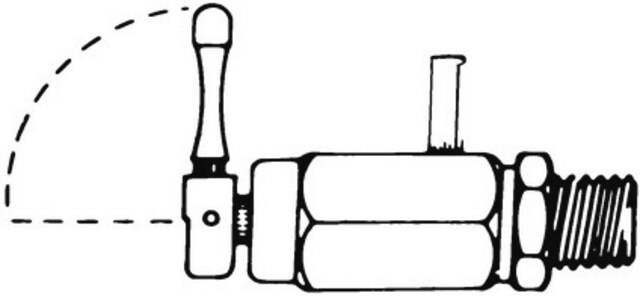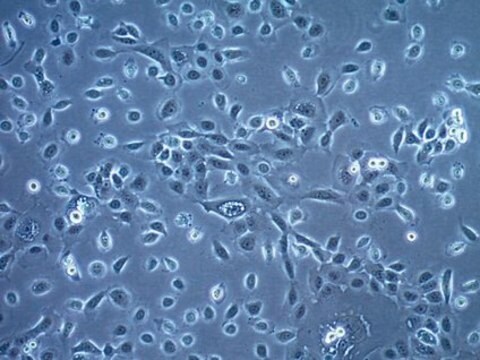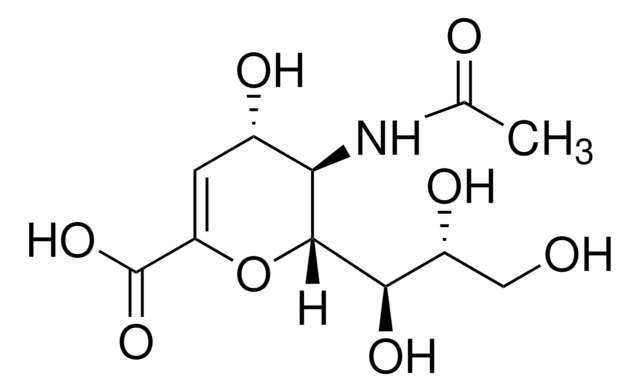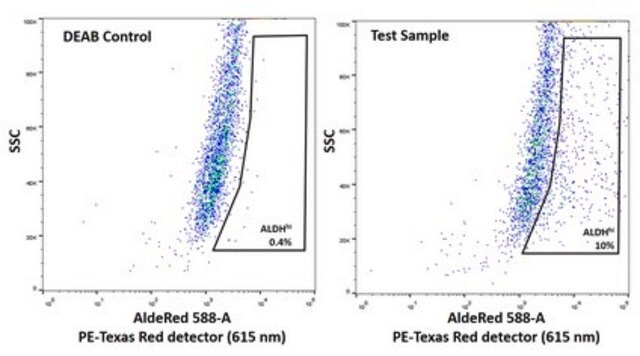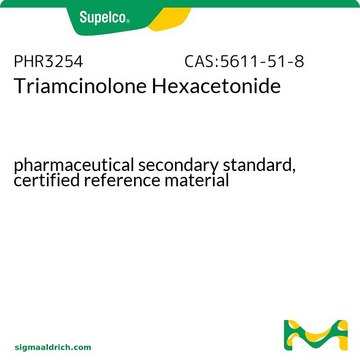SCC287
SQ-20B Human Squamous Cell Carcinoma Cell Line
SQ-20B human squamous cell carcinoma cell line is a widely used model for radiation-resistant HNSCC.
Se connecterpour consulter vos tarifs contractuels et ceux de votre entreprise/organisme
About This Item
Code UNSPSC :
41106514
Nomenclature NACRES :
NA.81
Produits recommandés
Application(s)
cell analysis
Description générale
Squamous cell carcinoma of the head and neck (HNSCC) represents 90% of all head and neck cancers (1). HNSCC is the 9th-most common cancer worldwide and is characterized by a high rate of recurrence after therapy, with a median 5-year survival range of 40-50% (1). Radiation resistance can arise when cells undergo sublethal damage during x-ray treatment, giving rise refractory post-treatment tumors with poor prognosis (2). Cellular models of HNSCC that demonstrate radiation-resistance are critical for elucidating factor associated with radio-resistance and advancing effective therapies.
The SQ-20B human laryngeal squamous cell carcinoma cell line is a widely used model for radiation-resistant HNSCC. SQ-20B cells were derived from a laryngeal tumor (tumor stage 2 node stage 0) that presented following primary radiation therapy (2). The SQ-20B cell line harbors the c-raf proto-oncogene (3) associated with tumorigenicity and radio-resistance (4). SQ-20B cells have been characterized by expression of the SCC marker p63 (p40) (5). The characteristics of the SQ-20B cell line demonstrate its utility as a model for cellular mechanisms that give rise to radiation resistance.
<bold>Source:</bold>
The SQ-20B cell line was derived from a tumor on the larynx of a patient undergoing radiation therapy2 and harbors a male karyotype (3).
Research Category:
Cancer
The SQ-20B human laryngeal squamous cell carcinoma cell line is a widely used model for radiation-resistant HNSCC. SQ-20B cells were derived from a laryngeal tumor (tumor stage 2 node stage 0) that presented following primary radiation therapy (2). The SQ-20B cell line harbors the c-raf proto-oncogene (3) associated with tumorigenicity and radio-resistance (4). SQ-20B cells have been characterized by expression of the SCC marker p63 (p40) (5). The characteristics of the SQ-20B cell line demonstrate its utility as a model for cellular mechanisms that give rise to radiation resistance.
<bold>Source:</bold>
The SQ-20B cell line was derived from a tumor on the larynx of a patient undergoing radiation therapy2 and harbors a male karyotype (3).
Research Category:
Cancer
Origine de la lignée cellulaire
Human, Cancer Cells
Conditionnement
≥1X106 cells/vial
Stockage et stabilité
Store in liquid nitrogen. The cells can be cultured for at least 10 passages after initial thawing without significantly affecting the cell marker expression and functionality.
Autres remarques
This product is intended for sale and sold solely to academic institutions for internal academic research use per the terms of the “Academic Use Agreement” as detailed in the product documentation. For information regarding any other use, please contact licensing@emdmillipore.com.
Clause de non-responsabilité
RESEARCH USE ONLY. This product is regulated in France when intended to be used for scientific purposes, including for import and export activities (Article L 1211-1 paragraph 2 of the Public Health Code). The purchaser (i.e. enduser) is required to obtain an import authorization from the France Ministry of Research referred in the Article L1245-5-1 II. of Public Health Code. By ordering this product, you are confirming that you have obtained the proper import authorization.
Unless otherwise stated in our catalog or other company documentation accompanying the product(s), our products are intended for research use only and are not to be used for any other purpose, which includes but is not limited to, unauthorized commercial uses, in vitro diagnostic uses, ex vivo or in vivo therapeutic uses or any type of consumption or application to humans or animals.
Code de la classe de stockage
10 - Combustible liquids
Classe de danger pour l'eau (WGK)
WGK 1
Point d'éclair (°F)
Not applicable
Point d'éclair (°C)
Not applicable
Certificats d'analyse (COA)
Recherchez un Certificats d'analyse (COA) en saisissant le numéro de lot du produit. Les numéros de lot figurent sur l'étiquette du produit après les mots "Lot" ou "Batch".
Déjà en possession de ce produit ?
Retrouvez la documentation relative aux produits que vous avez récemment achetés dans la Bibliothèque de documents.
Notre équipe de scientifiques dispose d'une expérience dans tous les secteurs de la recherche, notamment en sciences de la vie, science des matériaux, synthèse chimique, chromatographie, analyse et dans de nombreux autres domaines..
Contacter notre Service technique